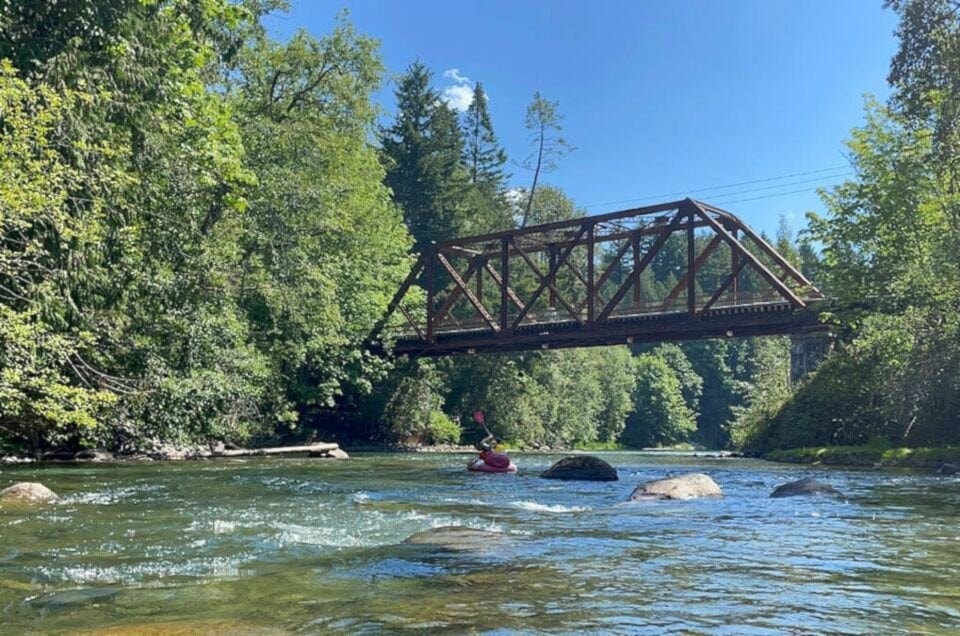The Cowichan River may have more pollution problems than many thought.
Liam Janke, a PhD student at the University of Victoria, worked with the Cowichan Watershed Board over the summer studying the water quality along the river. He presented a synopsis of his findings at the City of Duncan council meeting on Nov. 18. He found in his research significant levels of nutrients in a number of areas along the Cowichan River, all the way from Cowichan Lake to Cowichan Bay where it enters the ocean.
“The work I did indicated that this is a small part of a really big problem, although no hard conclusions have been made yet from this report, but it provides some interesting insights,” Janke said.
Janke said water-quality issues in the river played a part in the massive fish kill that saw approximately 84,000 fish from a number of species die in the drought-stricken Cowichan River near Skutz Falls in the summer of 2023.
He said one of the main reasons for the fish kill was sewage outfall from Lake Cowichan that enters the river near in that area, which contributes a significant amount of nutrients, including phosphorous and nitrogen, that causes algae blooms that deplete oxygen in the river and are harmful to fish.
“So what I wanted to do is look at how these levels of contamination change as you progress down the river to see if there might be other sources of pollution, and to what degree the sewage outfall is impacting the rest of the river system,” Janke said.
Janke said he used data for his research from seven water-quality testing stations along the river from over the past 30 years.
He said he found that the highest levels of pollution were recorded just downstream from the sewage outfall and then it was expected that, as more streams entered the river along its course to Cowichan Bay, the levels of contaminants would decrease as fresh water is added to the river.
However, Janke said the trend he found was that contaminant levels would increase again in mid river and then subsequently decrease before increasing again as the river gets close to Cowichan Bay.
“This could mean that, in the fall when there is more rainfall, there is more runoff from the surrounding land where there are agricultural properties and septic systems that could further increase the nutrient levels in the river,” he said.
“Another big takeaway from this research is that there is a big increase in pollutants below Somenos Creek (near Duncan) and that tells us that there are significant nutrients coming from Somenos Creek into the river. More data would be great to build a more complete picture.”
Coun. Tom Duncan asked Janke if the contaminants coming into the river from Somenos Creek were natural, and if the pollutants were bad for the river.
Janke said he was shocked when he saw how high the pollutants from the creek were.
“As for where it’s coming from, my research indicates that there are some agricultural lands in the surrounding watersheds, so runoff from the fertilizers that are used could absolutely be a cause,” he said. “Is it bad or good? I would say it’s probably not good and the numbers are above the desired threshold.”
Mayor Michelle Staples said Janke’s report brought up a lot of questions when it was presented at the Cowichan Watershed Board, and she expects work will continue on the issue to build on what Janke’s research has revealed.
Janke agreed that his report has led to a lot more questions.
“But I guess that's sometimes what we need,” he said.



